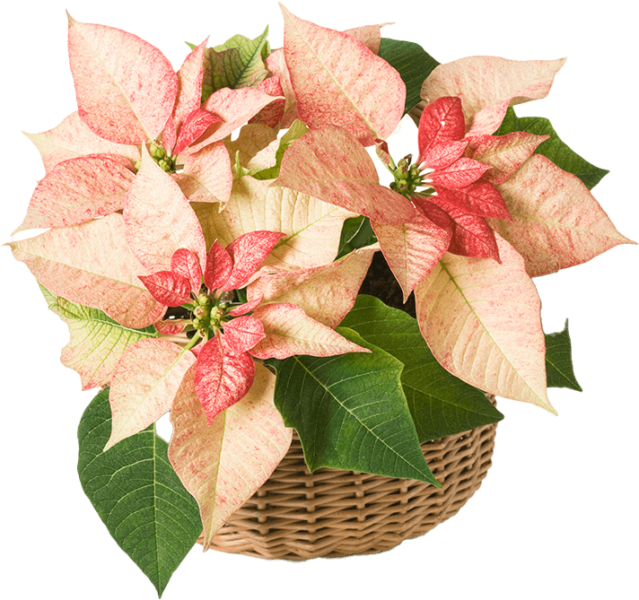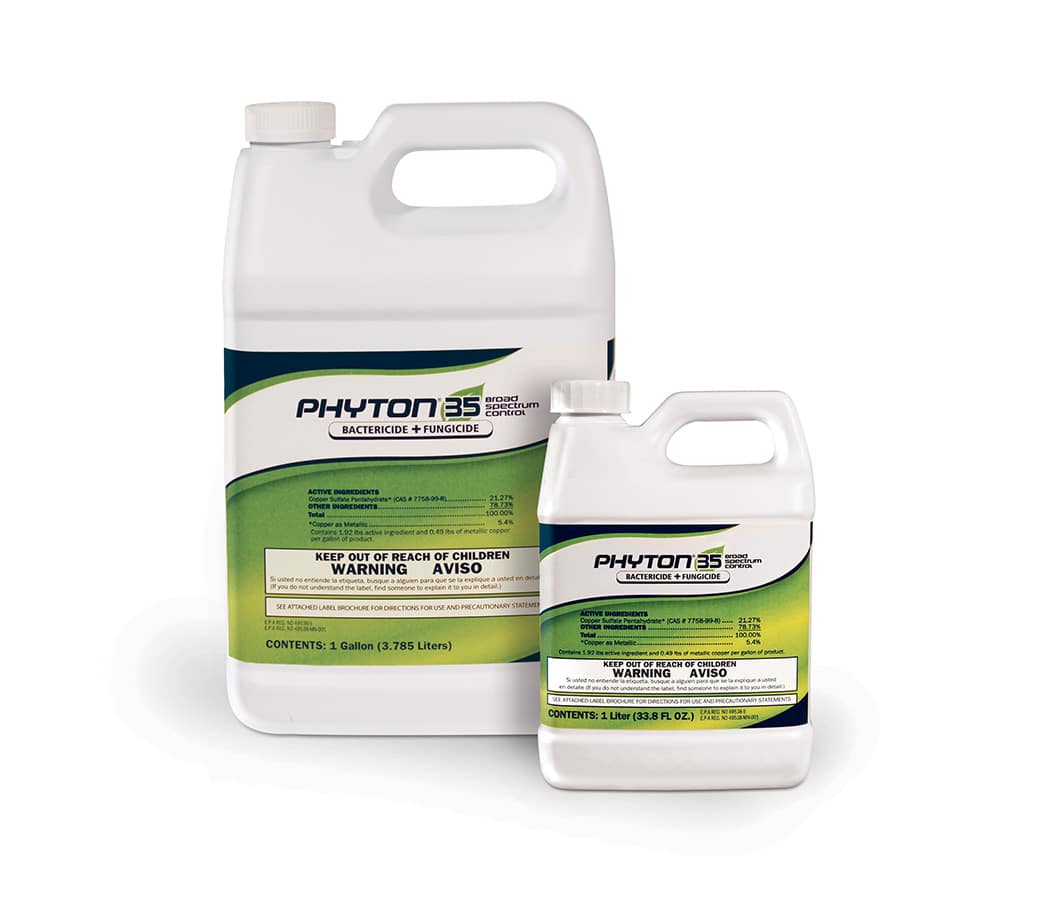
Long-lasting bactericide-fungicide for robust food and ornamental crops

Phyton 35: Broad-spectrum, food-safe systemic disease control that leaves no visible residue.
- Systemic: The patented chemistry of Phyton 35 speeds absorption into plants, enabling its active ingredient to move throughout the plant and be retained in the bio-system for up to 21 days.
- Won’t clog spray nozzles (It’s a solution, not a suspension)
- Leaves no visible residue
- Preventive & curative for root and foliar diseases
- “Warning” Label
- Excellent resistance management / rotation partner
- Very broad-spectrum
- Low risk of phytotoxicity when used as directed
- Use throughout the entire crop cycle, from propagation through shipment and harvest, including on open blooms
"I like Phyton 35. It's a systemic and a great preventative that does what it's supposed to do"
Watch how you can prevent and fight disease from the outside in with Phyton 35.

The smart choice to protect your ornamental and food crops from disease.
For ornamental and food crops:
- Fruits
- Vegetables
- Herbs
- Bedding Plants
- Cut Flower Crops
- Potted Flowering Crops
- Nursery Crops
- Herbaceous & Woody Stock
- Tropical Foliage Crops
Effective against stubborn pathogens:
- Botrytis
- Xanthomonas
- Bacterial Blight
- Erwinia
- Rhizoctonia
- Pseudomonas
- Downy Mildew
- Black Spot
Phyton 35 Applications
- Hydraulic or low volume spray
- Soil Drench
- Fog
- Cutting Dip
- Cut Flower Dip
- Tree Trunk Injection
- Chemigation
- All Stages of Croplife Cycle
FAQs about Phyton 35
The active ingredients in Phyton 35 are dissolved into a solution, so they can be readily absorbed into plants to fight disease from the inside. This absorption and translocation capability makes Phyton 35 (and Phyton 27) different from other copper-based products. Because most copper-based products work only through physical contact with a pathogen on the plant’s surface, they leave behind a heavy, mostly insoluble copper residue to control diseases. Phyton 35 is a soluble, systemic copper formulation that provides highly effective disease control inside the plant as well as on the plant’s surface, with no visible residue.
Yes. Phyton 35 is labeled for use on tomatoes, peppers, cucurbits, crucifer crops, eggplants, strawberries, raspberries, blackberries, and a variety of herbs.
Like Phyton 27, Phyton 35 has a low risk of phytotoxicity when used as directed. It can be used on most open flowers and buds at lower rates. The exceptions are Gloxinia flowers and certain sensitive varieties of orchids. We recommend that you trial it on a small number of plants with flowers or buds at the intended dosage rate before treating the entire crop. Phyton 35 can also be used on poinsettia bracts, even in full color. It is one of the few products that can be used at this critical stage of the growth cycle, and with no visible residue.
Yes. Phyton 35 is compatible with most registered pesticides. Before using additives and/or combinations for general applications, test for physical compatibility and non-injury under your conditions of use. Avoid mixing with other metals, salts, or horticultural oils. Do not tank mix Phyton 35 with B-NINE and do not apply Phyton 35 within 7 days before or after applications of B-NINE. Do not tank mix Phyton 35 with strongly acidic compounds, such as Aliette, and do not apply Phyton 35 within 14 days before or after the application of such products.
Phyton 35 is an excellent cornerstone product for an integrated pest management (IPM) program because its broad-spectrum activity gives concurrent control of multiple diseases with a single application. It is compatible with many other pesticides, including many bio-pesticides. Phyton 35 can play an important role in microbial resistance management as a rotation partner with other chemistries.
Phyton 35 contains a sufficient amount of surfactant for most applications, so additional surfactant is seldom necessary. If needed, most non-ionic surfactants are compatible with Phyton 35. Because Phyton 35 is formulated to be absorbed by the plant, it is not compatible with stickers and horticultural oils. They hold Phyton 35 on the plant surface, reducing absorption and effectiveness while also increasing the risk of phytotoxicity.